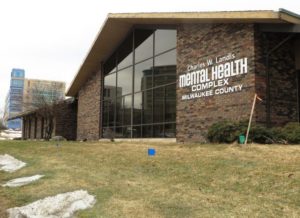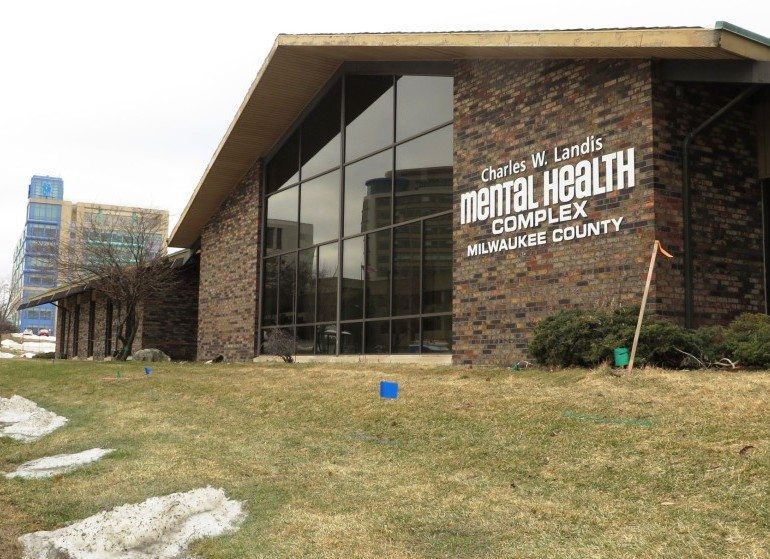As the Milwaukee County Behavioral Health Division continues to move services off its aging, over-sized Wauwatosa campus and into community-based settings, a new report released Thursday outlines plans for a redesign of the county’s psychiatric crisis service system.

Creating a new psychiatric emergency department, expanding crisis resource centers, providing more mental health services in federally qualified health centers and sending more clinicians out with police officers to respond to crises are among the recommendations included in a new report from Wisconsin Policy Forum and Massachusetts-based consulting firm Human Services Research Institute.
The report, which was commissioned by the BHD and Milwaukee Health Care Partnership, highlights the need to bridge the disconnect between public and private providers in caring for those with mental illness.
“All parties are involved in the delivery of psychiatric crisis services today,” said Mary Jo Meyers, director of the county Department of Health and Human Services. “We have extensive services, both those that are sponsored by the BHD and those that are occurring in inpatient emergency and outpatient settings, community health centers and others. I think what we’ve learned is that many of those component parts are not coordinated and we’re not working together to create a true system of care.”
For nearly a decade, the BHD has been working to shift away from providing institutionalized care on its Milwaukee Regional Medical Center campus – which is largely considered outdated, expensive and ineffective – to offering mental health and substance use services in community-based settings. The overhaul of the BHD was the subject of a 2016 BizTimes cover story.
Part of that effort has included the decision to outsource the county’s inpatient behavioral health services to a private provider. The county has contracted with Pennsylvania-based Universal Health Services to build a freestanding 120-bed hospital at an undetermined site in the county, which is expected to be operational in 2021. UHS does not plan to operate an emergency department at the hospital.
When patients transfer to that hospital, the sprawling, 900,000 square-foot Mental Health Complex will be nearly vacated, except for the BHD’s emergency department and observation wing.
Who will provide those services and where the facility will be located when the new UHS hospital opens has yet to be determined. The report doesn’t offer specific suggestions for the location or provider of the new facility.
“We will consider many sites, but that will be further explored in phase 2 (of the redesign process),” Meyers said.
Under the redesign, a new emergency department would operate on a much smaller scale than the current facility, narrowing its services to those who need more specialized psychiatric crisis services than private hospital emergency departments are able to provide. The report suggests the county and private health systems would share financial responsibility for the new emergency department, with the possibility of joint governance.
It’s estimated that the new facility would see about 3,200 admissions annually, a significant decrease from the current volume of about 8,000, according to the report. Under the redesigned model, many of the current voluntary walk-in admissions could be directed to other services, including private hospital emergency departments, the report said.
County mental health leaders say there is a need for more investment in prevention and early intervention services to avoid crises that lead to more intensive and costly care. The nearly 100-page report outlines many suggestions for how to do that. One option is to provide more behavioral health services in federally qualified health centers, said Mike Lappen, BHD administrator.
“By co-locating the BHD crisis services with (the FQHCs), we believe we will be able to serve people sooner and in a more preventive way and serve them along with all the other health services they can access at the health centers, like pharmacy,” Lappen said. “That availability of care will be a significant improvement; in our current state, if you have Medicaid, you might wait six months for your first appointment with a therapist.”
Lappen said another existing program, which teams up a BHD clinician and law enforcement officer to respond in crisis situations, could also be expanded under the redesign.
“We’ve had great success,” Lappen said. “When those teams are involved with someone’s care, they are significantly less likely to get arrested or end up under emergency detention because those teams are very knowledgeable about the alternatives for those individuals and are able to engage and get them connected to those resources.”
Another proposal is to establish a new urgent care/triage clinic which would operate 24/7 for walk-in and police drop-off and serve as diversion from emergency departments, inpatient admissions and police custody. In addition to de-escalating crises, the clinic would be able to direct patients to outpatient services or other long-term care.
The report assumes there won’t be any increases in county funding for the psychiatric services. Rob Henken, president of the Wisconsin Policy Forum, said there could be opportunities for the county to access more federal or state funding, or philanthropic support.
An oversight group will now be responsible for planning and implementing the concepts outlined in the report.
“We’re seeing a very high level of private-public cooperation here,” Henken said. “I’ve been at this for a long time and as the head of an organization that preaches better, more efficient, good government, that’s very important. In this case, you have to have the private sector players and public sector players working well together. We’ve just gone through nine months of intensive planning and both sides are at the table and eager to roll up their sleeves to work on implementation.”


